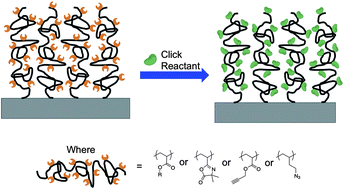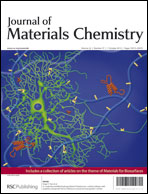Utilizing click chemistry to design functional interfaces through post-polymerization modification
Abstract
Post-polymerization modification is a simple and effective method to add complex functionality to a polymeric interface. A wide variety of click reactions have been utilized as a means of post-polymerization functionalization on surface-bound

- This article is part of the themed collection: Materials for biosurfaces

 Please wait while we load your content...
Please wait while we load your content...